Archive
You are currently browsing the archives for the Uncategorized category.
By robertr
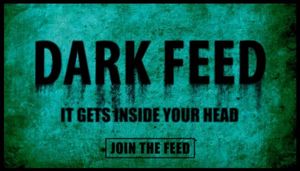 On Friday, February 26, 2010, the screenwriting and brother duo Shawn and Michael Rasmussen visited Randy Steinberg’s Screenwriting II class to speak to both graduate and undergraduate screenwriters.
On Friday, February 26, 2010, the screenwriting and brother duo Shawn and Michael Rasmussen visited Randy Steinberg’s Screenwriting II class to speak to both graduate and undergraduate screenwriters.
In a sense, it is because of COM and BU that The Rasmussens got their start in screenwriting. The brothers, originally from Texas, were not always a writing team. Shawn got a degree in engineering while Michael went to film school. After several years, they both found themselves in Boston working in the corporate world; it’s then that they teamed to start writing scripts and joined a writing group called the Harvard Square Screenwriters. Enter into this story a man named Glenn Cooper: Cooper, a doctor and CEO, decided to go back to school at mid-life and attended Film/TV so that he could amass the knowledge needed to make a movie. Through a connection to the Harvard Square group, Cooper (you may recognize him as the namesake of 2010’s Glenn Cooper Screenwriting Award at COM) got in touch with the Rasmussens who had a script titled Long Distance. Cooper snapped the script up and in 2005 the movie was made and distributed. The Rasmussens’ career was launched.
Soon thereafter, The Rasmussens moved to Los Angeles, got an agent, and began writing new material. It is a script they wrote while in LA that they had students in Randy Steinberg’s class read. About that script, titled Horoscope, Michael Rasmussen said, “We wanted students to see what the real world of screenwriting looked like. In the Hollywood system, there are many voices asking you to take your original vision in many different directions. The results can be less than desirable even though you are meeting a lot of players and important decision makers.” Horoscope never got made and petered out as a project, but it was a great learning experience and on the heels of that failure The Rasmussens had another great success.
This fall, a film will come out titled The Ward, written by The Rasmussen Brothers and directed by the legendary John Carpenter who came out of retirement to make this movie.
Long Distance (about a woman who is being stalked by telephone by a serial killer who is getting closer and closer to her), The Ward (about women confined to a mental hospital who are seeing real ghosts), and Horoscope (about a doctor who receives terrifying horoscopes that all come true) are all of the horror/thriller variety, and it is here where the Rasmussens are staking their claim to mastery in the genre and the screenwriting business. On top of this, they are soon venturing into directing as they begin pre-production on their own film Dark Feed, an independent horror film to be made in Boston. And the Rasmussens will actually use COM to hold auditions for this film.
Students in Steinberg’s Screenwriting II class work primarily on writing the first act of a feature-length screenplay. When asked what makes a strong first act, Shawn Rasmussen replied, “It has to grab you. It has to push you forward from one scene to the next without relenting. It’s the first act, obviously, of a story and if you can’t capture your audience in act one why should the keep reading or watching.”
The Brothers also passed on a few tricks of the trade. Michael Rasmussen said, “If you have extras in your scene, Policeman #1 or Student #2, don’t call them Policeman #1 or Student #2. That’s bland and boring, and even though the characters might not be important giving them generic names makes the script less interesting. So call them Crazy Cop or Obnoxious Student. It’s a little thing but enough to give even third-level characters some depth.”
Both graduate and undergraduates had many questions for the Brothers who were nice enough to volunteer their time to pass on their experiences and wisdom to students at COM. For this we thank them and hope to see them return very soon.
By robertr
A great documentary editor has been taken from us. This past weekend, while crossing the street near her apartment in New York City, Karen Schmeer ( '02) was the victim of a hit and run by a 25-year-old fleeing the scene of a robbery. She was returning home from work on her latest project for HBO, a documentary on Bobby Fischer.
Schmeer, who worked with Errol Morris on many of his documentaries, including The Fog of War, Fast, Cheap and Out of Control and Sydney Pollack's, Sketches of Frank Gehry visited the BU Cinematheque a few years ago to talk about her work with Mr. Morris and her time as a student in the Film and Television department. She was exceedingly kind and encouraging the the students gathered there. She will be missed.
Preparations are being made for memorials at Boston University and Coolidge Corner Theater--details to come.
By robertr
Ben Pilat, (CFA '08) recently won the sixth annual Rising Star Award, presented by the Association for Performing Arts and Entertainment Professionals (USITT). The award is given to a promising lighting professional within the first few years of joining the workforce. Learning his craft in part from professor John Gates, Ben has moved on as the lighting supervisor of the Los Angeles Ballet, and is currently doing freelance work in New York City. Congratulations Ben!
The award will be presented to Ben at USITT’s 50th Annual Conference & Stage Expo in Kansas City, MO.
For a profile of Ben in BU Today, visit their website.
For more information on USITT, visit their website.
By robertr
Next week, the director of Boston University's Writing and Directing graduate degree programs in L.A. will hold the opening of his theatre and video piece, What Dreams May Come. Matt Watckins (COM '09), created the video for the production, and the show will run for a month at the College of Fine Arts.
For more information, and to obtain complimentary tickets to the opening night and reception, visit: the online alumni community.
The press release is below:
Join the Boston University community as we celebrate "One BU" with a collaboration among the various schools, colleges and departments of the university.
Robert Shampain (CFA'80), Director of the Boston University Los Angeles graduate internship programs for actors and writers, is visitng the Charles River Campus for one month to direct What Dreams May Come, a live theatre piece with video.
The subject matter of the project is nightmares and how we deal with the intense emotions they bring up, inspired in part by BU School of Medicine professor Patrick McNamara's 2008 book Nightmares. The collaborative show had a very successful workshop production in LA last year, and is being expanded for the BU version to include 10 actors from the School of Theatre, film students from the College of Communications, as well as input from Professor McNamara and his students.
The post-show reception will include light refreshments and a panel discussion with Robert Shampain, Matt Watkins (COM'09) and other experts from the Boston University community.
Additional performances will take place February 12th and 13th. For more information, please contact the School of Theatre at 353-3390.
By robertr
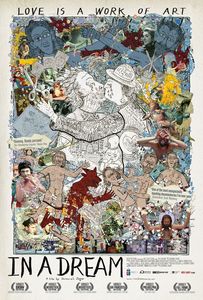 Over the last few years, In a Dream, the feature-length documentary produced Boston University alum Jeremy Yaches has made its way around the festival and theatrical circuit, and has now made its way to DVD. The film follows the life of mosaic artist Isaiah Zagar as he covers Philadelphia with this beautiful, family-oriented, expressive, and sometimes sexual works of art. Yet the heart of the film is more than just the journey of an artist and his medium; director Jeremiah Zagar, the subject's father, infuses the struggles of their family into the movie until they are inseparable. The result is a wonderful film.
Over the last few years, In a Dream, the feature-length documentary produced Boston University alum Jeremy Yaches has made its way around the festival and theatrical circuit, and has now made its way to DVD. The film follows the life of mosaic artist Isaiah Zagar as he covers Philadelphia with this beautiful, family-oriented, expressive, and sometimes sexual works of art. Yet the heart of the film is more than just the journey of an artist and his medium; director Jeremiah Zagar, the subject's father, infuses the struggles of their family into the movie until they are inseparable. The result is a wonderful film.
In their own words:
"Over the past four decades, Isaiah Zagar has covered more than 50,000 square feet of Philadelphia with stunning mosaic murals. In A Dream is a documentary feature film that chronicles his work and his tumultuous relationship with his wife, Julia. It follows the Zagars as their marriage implodes and a harrowing new chapter in their life unfolds."
When the film screened at the MFA last year, Kelly Smart and I were lucky enough to sit down with Jeremy, Jeremiah and his parents, Julia and Isaiah for nearly an hour-long interview. All four of them were open to answering the tough questions that we had for them--the film being about the struggles of their own family and all. We'll re-post that interview soon, but for now, head over to their site, give the trailer a look, and perhaps help out a BU alum by purchasing the dvd.
http://www.inadreammovie.com/
-Rob Ribera
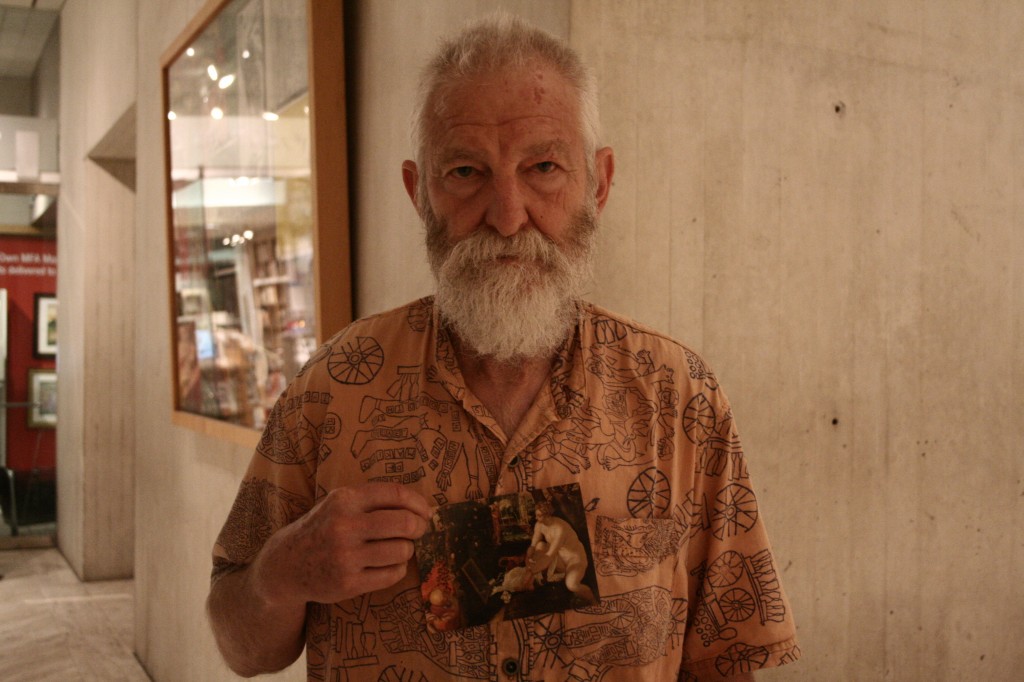
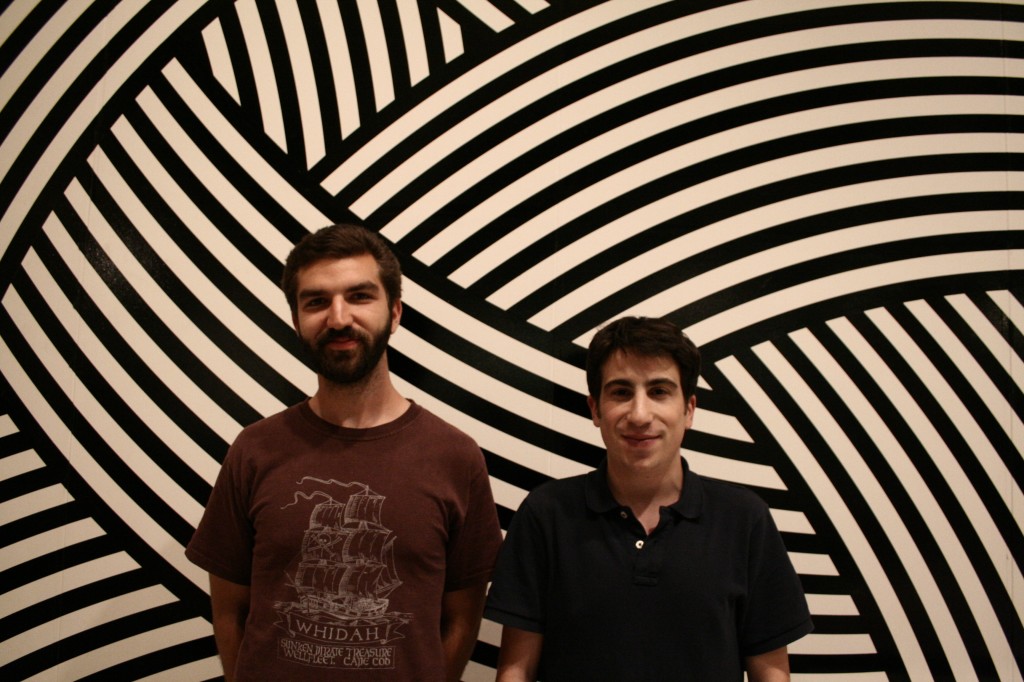
By robertr
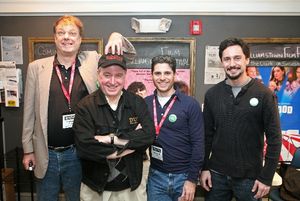
One of my short films, Werewolf Trouble, has had a fortunate run at a dozen film festivals and I’ve been able to attend most of them. I knew the Williamstown Film Festival was different the moment I received my acceptance. Having grown accustomed to carbon copied e-mails, I was mildly shocked when the good news came in the form of a phone call from Executive Director Steve Lawson. When Steve also offered me lodging, I thought he had momentarily confused me with one of WFF’s celebrity guests, like James Ivory or Barry Levinson.
The fun started with a resplendent autumn drive along the Mohawk Trail as I headed west through the Berkshires from Boston. I arrived in Williamstown to find my room waiting and food served at a cocktail party before a screening of La Nave De Los Monstrous (The Ship of Monsters), a campy sci-fi feature accompanied by a live original score by the string quartet, Ethel. The after-party was held in the lobby of the Mass Moca where I enjoyed a conversation with one of Ethel’s violinists, Mary Rowell. As the party advanced on the wee hours, I wondered if anyone would wake up in time for my screening at 10:00 the next morning.
But the “All-Shorts” session at Images Cinema was packed. Before the movies started I had a pleasant conversation with Tom Fontana, writer/producer of Oz and Homicide, and member of WFF’s board of directors. An eclectic selection of ten movies was shown and the audience ranked their favorites. I crossed my fingers in hopes that Werewolf Trouble would not be screened immediately after Bill Plympton’s weird and hilarious, Hot Dog. I’ve been a fan of Plympton’s since his first animated short, Your Face (1988 Oscar contender). WFF surprised me again when I found myself sitting next to Plympton during the Q&A after our screening. Bill was well-spoken and genuine, and he stood in Images’ lobby personalizing drawings of his hero dog for anyone who waited in line.
Director James Ivory (The Remains of the Day, Howard’s End) was the honored guest at a lunch seminar that afternoon. I won’t forget one of his stories: during a break from filming Mr. and Mrs. Bridge, James took a drive with Paul Newman as an evening snow dusted the streets. Fatigued from the shoot, Ivory fell asleep in the passenger seat during a lull in the conversation about Newman’s character. The star continued cruising and thinking as his director dozed. Eventually James woke to the sound of Newman singing. For a fleeting moment he felt like he was in his own movie—as though he were young Douglas Bridge and Newman his father. We spend so much energy as filmmakers trying to turn dreams into reality that unique anecdotes like this really stand out, when reality becomes the dream and those enigmatic creative forces we are always playing with gently push back like childhood friends.
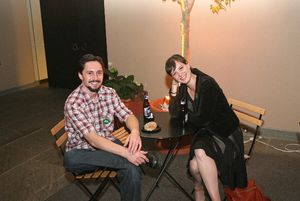
I met Bill Plympton again at a cocktail party hosted by Bill Wagner, president of Williams College. Delighted to raise a glass with an artist I admire, I mentioned that I’m also a film instructor at Boston University and asked Plympton what advice he would offer students to inspire creativity. “Look at real life,” he said. “That’s where the interesting stuff is happening.” I couldn’t agree more. Joining the conversation was Alycia Delmore, star of Lynn Shelton’s new feature, Humpday. Alycia’s advice was to first imagine something that would never happen in this world, then imagine the world in which it would happen. I’m also fond of Alycia’s comment because so many effects-happy movies get this backwards—or even worse, just skip the first part entirely.
Alycia and I attended the screening of Barry Levinson’s new “film essay,” Poliwood, at The Clark. Levinson (Rain Man, The Natural) answered questions about his treatise on the influence of celebrity culture and television on politics, and accepted an award from WFF: a hand-painted still from the 1998 feature, What Dreams May Come, by celebrated artist Stephen Hannock (also a member of WFF’s board of directors). Delicious Halloween desserts were then served in the Clark Courtyard. The next morning I met Alycia for coffee and we attended a screening of her movie, Humpday. That was another unique experience—sitting in the theater next to an actress I had just met while watching her movie. I was impressed by Alycia’s command of the screen and her insightful comments during the Q&A. Look for Humpday if you like provocative comedies. It’s very well done.
I was a little glum leaving Images Cinema for the last time that weekend—sad to leave off new friendships for the time being and to depart Williamstown after such a wonderful weekend. Then Steve Lawson did it again: he offered to treat the remaining filmmakers to lunch. Was he also feeling a bit heavyhearted to see the lights come up on WFF’s eleventh season? I think so. And I’m sure most will agree that kind of commitment to any endeavor is a rare joy to behold. If you made it this far, I hope you will consider getting involved with the Williamstown Film Festival. There simply aren’t enough quality venues where emerging filmmakers can showcase their work and established artists can bring their passion projects. Even less common are events that hold their audiences and lesser-known guests in the same regard as their superstars. Submit your movie if you have one, make a donation if you are able, or plan on attending next season: http://www.williamstownfilmfest.com/.
-Charlie Anderson
Photos by Roman Iwasiwka. First photo left to right: Bill Plympton, Steve Lawson, Jesse Bernstein, Charlie Anderson; Second photo: Charlie Anderson, Alycia Delmore.
By admin
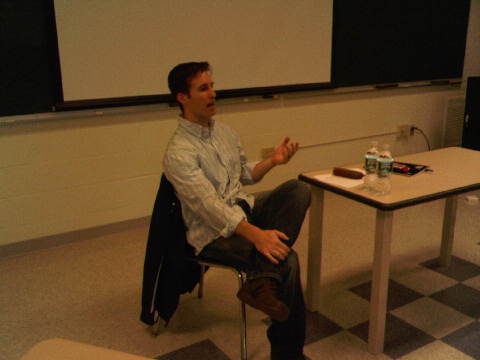
In Buried, the movie written by Chris Sparling, a civilian contractor in Iraq, Paul Conroy, awakes to find himself sealed in a coffin several feet below the surface of the desert. He has only a cell phone, a glow stick, and a limited amount of air. Will US forces rescue him before the coffin fills with sand? Will his kidnappers kill him or ransom him? What’s more thrilling and chilling than any of these questions is that the entire film takes place inside the coffin. It is a terrific concept and a brilliantly executed script, one which Hollywood buyers could not resist. Buried stars Ryan Reynolds and was filmed this summer in Spain. It will likely play at Sundance in January 2010 and then, perhaps, at a theater near all of us.
Chris Sparling taught Screenwriting II at COM in the spring of 2009, and just a few months later , he sold the script that launched his writing career. Sparling returned to COM in the fall of 2010 to speak to Randy Steinberg’s Screenwriting II class about the process of writing, the specifics of how Buried was sold and made, and the ins and the outs of the ‘business’ writers face as they take their scripts out into the world.
Students in Screenwriting II are focused on writing their first feature-length screenplay, and specifically, as part of the work of the course, concentrate on writing and rewriting the first act of a screenplay. To them, Sparling emphasized the importance of putting together a strong outline before working on the script itself. “Some people think they can sit down and just write the script,” Sparling said, “but I think the script is written before you even type ‘fade in.’ Your outline should be so strong and well thought out, the writing of the script should flow effortlessly from that. You wouldn’t construct a building without a blueprint; it’s the same thing for a script.”
The undergraduate students of Screenwriting II were joined by second-year graduate students in screenwriting. The grad students will soon be leaving the academic world of screenwriting and attempting to forge the heady waters of the movie business. In response to one of the eternal questions screenwriters ask –How do I get an agent?—Sparling said, “You have to cultivate relationships. You have to nurture them. You may meet an agent and send him a script. Odds are it will be a pass if he or she reads it at all, but you keep that relationship open and get recommended to others, and maybe on the fourth or fifth script you send to an agent…that’s the one they love and want to rep.”
And that’s exactly how it worked for Sparling. After spending some time in LA, he returned to his home state of Rhode Island in 2005 to write, direct, and act in an indy feature-film he made called An Uzi at the Alamo. The film impressed a top-notch manager, and the offer to send the manager any future material was made. After sending a few scripts, Buried blew the manager away. He took on Sparling and sent his script out wide to the industry. Ryan Reynolds was attached, the film was made, and Sparling now appears to be embarking on a journey every aspiring writer dreams about. “The first time I flew into LA, I had 15 meetings in five days, “ he told students. “The next time it was 20 meetings.” Indeed, another script of his was recently purchased, and it could be made within the year. He’s up for all kinds of assignments and is meeting key decision makers in the industry.
Sparling’s story is an inspiration not only to BU Film and TV students, but also to writers everywhere. It goes to show how one day you can be the struggling unknown and the next day the toast of the town. COM –and screenwriting students in particular— thanks Chris Sparling for coming in to share his insights about the art, craft, and business of screenwriting.
-Randy Steinberg
 On Friday, February 26, 2010, the screenwriting and brother duo Shawn and Michael Rasmussen visited Randy Steinberg’s Screenwriting II class to speak to both graduate and undergraduate screenwriters.
On Friday, February 26, 2010, the screenwriting and brother duo Shawn and Michael Rasmussen visited Randy Steinberg’s Screenwriting II class to speak to both graduate and undergraduate screenwriters.
 Over the last few years, In a Dream, the feature-length documentary produced Boston University alum Jeremy Yaches has made its way around the festival and theatrical circuit, and has now made its way to DVD. The film follows the life of mosaic artist Isaiah Zagar as he covers Philadelphia with this beautiful, family-oriented, expressive, and sometimes sexual works of art. Yet the heart of the film is more than just the journey of an artist and his medium; director Jeremiah Zagar, the subject's father, infuses the struggles of their family into the movie until they are inseparable. The result is a wonderful film.
Over the last few years, In a Dream, the feature-length documentary produced Boston University alum Jeremy Yaches has made its way around the festival and theatrical circuit, and has now made its way to DVD. The film follows the life of mosaic artist Isaiah Zagar as he covers Philadelphia with this beautiful, family-oriented, expressive, and sometimes sexual works of art. Yet the heart of the film is more than just the journey of an artist and his medium; director Jeremiah Zagar, the subject's father, infuses the struggles of their family into the movie until they are inseparable. The result is a wonderful film.



